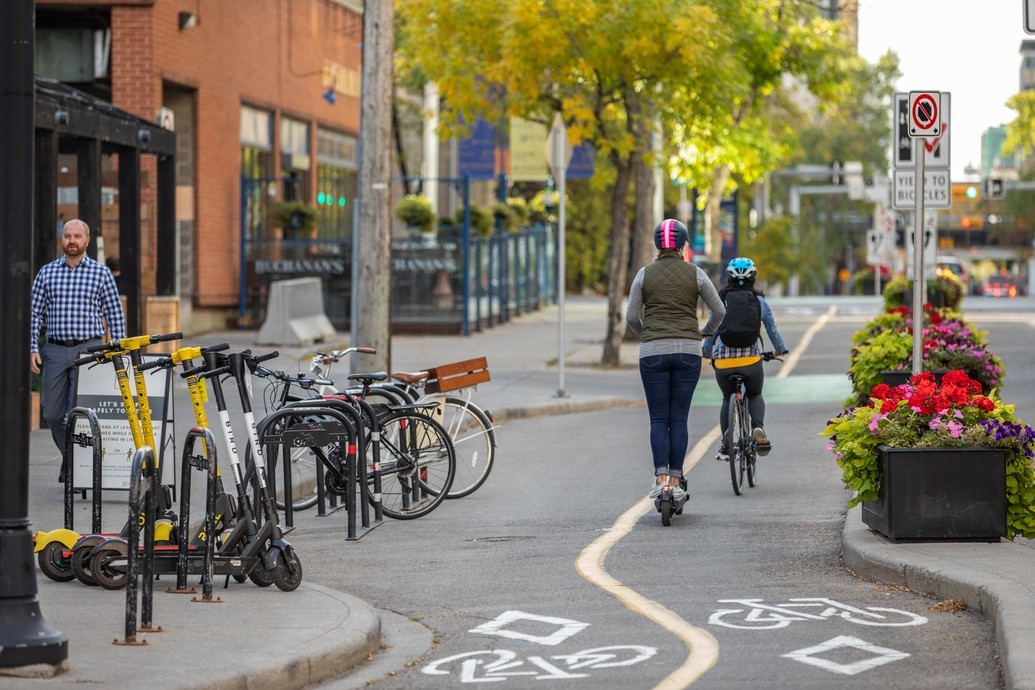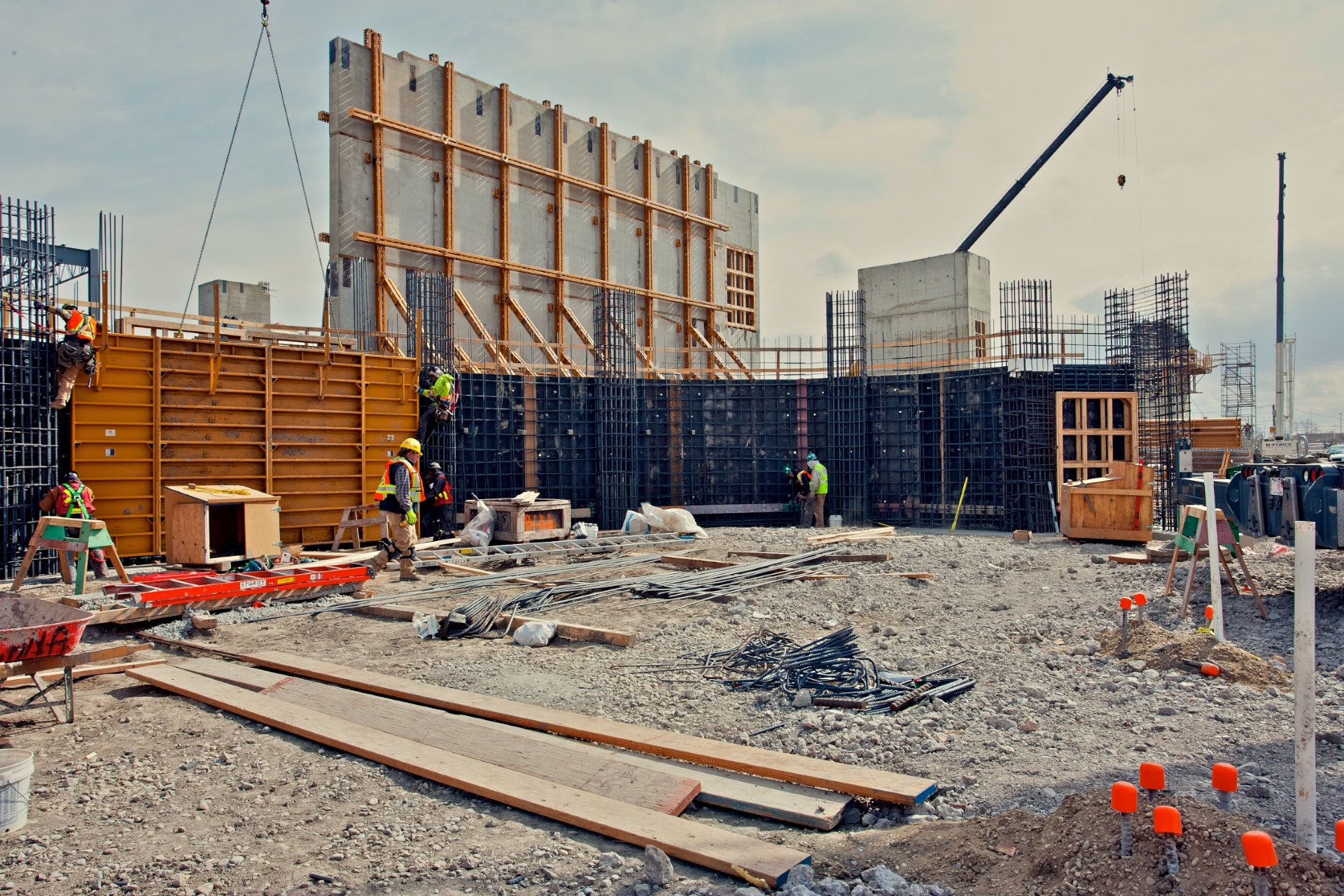Off-site levies
About off-site levies
Off-site levies are a financial tool used by The City to fund infrastructure needed for growth. The money collected helps pay for all or part of the capital cost of eligible infrastructure and facilities that support growth in new and established communities.
These levies help pay for the infrastructure triggered by growth. The Municipal Government Act and the Off-site Levies Bylaw outline what infrastructure the levy pays for.
That infrastructure helps provide 10 home and business essential services to Calgarians:
- Providing Calgarians with vibrant communities that meet their basic needs.
- Building the right infrastructure in the right place at the right time.
- Achieving City policies and strategies for growth in accordance with the Municipal Development Plan and Calgary Transportation Plan.
In accordance with the Municipal Government Act and The City of Calgary Charter, Calgary may provide for the imposition and payment of an off-site levy in respect of land that is to be subdivided, developed or redeveloped.
The levies program consists of two components: Off-site Levies program and Centre City Levy program.
The Off-site Levies program funds infrastructure in the Greenfield Area and Established Area. Off-site levy rates in the City’s Greenfield Area are levied per hectare for all development types and for all infrastructure types. In the Established Area, the off-site levy rate applied is only for water and wastewater treatment infrastructure.
The Centre City Levy program collects levies and charges from developers funds of local utility infrastructure and public realm improvements to support new growth within the Centre City Plan Area.
Off-site Levies Bylaw
The Off-site Levies Bylaw was updated and approved by City Council on Jan. 16, 2024. The City worked closely with interested parties from the land development and home building industry.
Off-site levies engagement documents and consultation

As part of the Off-site Levies Bylaw update from 2020 and 2023, The City of Calgary consulted with interested parties about the needs for current and future infrastructure. They also discussed how to calculate off-site levies and what changes to the bylaw would be considered. During this time, The City shared all the calculations and information they used to determine the levy rates. The information shared with interested parties during consultation is available through The City of Calgary's archived Engage Portal.
Off-site levies documents
Greenfield Off-site Levies
A Greenfield Area is undeveloped land that can be used for building commercial, residential, or industrial projects.
A large part of Calgary is called the Greenfield Area. This is land on the edges of the city that hasn't been developed yet. New communities are expected to be built, which will affect the infrastructure around them. This can mean more pressure on major roads, the sewage system, and higher demand for recreation and services like police and fire protection.
The City and developers share a part of the cost of off-site infrastructure in new communities. This funding helps build the infrastructure needed for vibrant communities. The developers' part of the off-site levy supports new growth, while The City pays for the infrastructure that benefits existing residents and the remainder of the cost.
Greenfield levies rates and payment
In the Greenfield Area, levies are usually managed through a Development Agreement, which is required for subdivision approval. These levies are paid over three years, with the first payment due one year after the agreement is signed. The portion of levies paid is made as follows:
- 1st payment = 30% of total levies owing
- 2nd payment = 30% of total levies owing
- 3rd payment = 40% of total levies owing
Greenfield levy calculations
The Greenfield off-site levies are calculated by adding up the cost of the infrastructure needed for 10 business and home essentials. This cost is then adjusted based on how much new growth benefits from these essentials, shown as a percentage.
The levy rate per hectare is found by dividing the adjusted cost by the remaining land area that hasn't been levied yet.
The Background Report explains the off-site levies calculation method in more detail. It also includes the growth assumptions, infrastructure projects, and cost estimates that support the off-site levies rates.
Greenfield levy spending
According to the Municipal Government Act, off-site levies are collected and tracked by infrastructure type and can't be used for other types. For example, money collected for transit buses must be spent on transit buses and can't be used for wastewater infrastructure. Often, off-site levies cover part of the cost, with the rest coming from other city funding sources.
The City of Calgary provides annual reporting of levies collections and expenditures.
The following project summaries show the infrastructure projects that are expected to be funded by the Greenfield off-site levies. They include the type of infrastructure, project description, project need, and the estimated total cost.
Project summaries
Transportation
Transportation
Water
Fire
Recreation
Recreation
Libraries
Libraries
Police
Documents, reports and resources
Established Areas Levies
The City of Calgary collects levies in the Established Area from developers building new buildings.
These funds pay for two business and home essentials:
-
Clean and safe drinking water
-
Flush toilets, drain sinks and bathtubs
Starting in March 2024, the City is offering a three-year cost-sharing program for developers. The Established Area Linear Levy Pilot will accept submissions until September 1, 2026. The pilot aims to boost housing in the Established Area by contributing to water and wastewater upgrade costs.
Established Areas levies rates and payment
Within the Established Area, levies can be paid in two ways:
- Prior to the release of a development permit.
- Prior to the release of a development completion permit. This option requires the landowner to enter into an off-site levies agreement prior to release of the development permit.
Established Areas levy calculations
Similar to the Greenfield off-site levies, The City consulted with interested parties before deciding on how to define and address current and future infrastructure needs in the Established Area and set the levy rates.
The information presented to the development industry members during the consultation process is available through the Engage Portal.
Established Areas levy spending
Similar to the off-site levies in the Greenfield Area, levies in the Established Area are collected and tracked by infrastructure type and can't be used for other types. Off-site levies cover part of the cost, with the rest coming from other city funding sources.
Centre city levy
The Centre City Levy program collects levies and charges from developers to help fund local utility infrastructure and public improvements in the Centre City Plan Area. These funds pay for essential infrastructure like water pipes and park upgrades.
The levies fund 10 business and home essentials:
Centre city levy rates and payment
The centre city levy consists of:
- The utility portion through the Centre City Levy Bylaw (Bylaw 38M2009).
- The voluntary community services portion under Council resolution (as per report LPT2010-03).
On Feb. 8, 2010, through report LPT2010-03, the centre city levy rates were adjusted to the current rates.
Centre city levy spending
- All or part of the costs for building, upgrading, and replacing water and sewer mains needed for new subdivisions or developments in the Centre City Plan Area.
- Community or recreation infrastructure like fire, police, transit, recreational facilities, and libraries.
- Active transportation infrastructure such as pedestrian over passes and underpasses, bike ways, and sidewalks.
- Upgrading local parks, regional pathways, and regional parks.
- The 13 Avenue Greenway.

Documents, reports and resources
Annual Reports and FAQs
-
Download the report
-
Download the report
Historic annual reports
Off-site Levies
- Off-site Levies Annual Report 2023
- Off-site Levies Annual Report 2022
- Off-site Levies Annual Report 2021
- Off-Site Levies Annual Report 2020
- Off-Site Levies Annual Report 2019
- Off-Site Levies Annual Report 2018
- Off-Site Levies Annual Report 2017
- Off-Site Levies Annual Report 2016
- Off-Site Levies Annual Report 2015
- Off-Site Levies Annual Report 2014
- Off-Site Levies Annual Report 2011-2013
Centre City levy
Off-site levies FAQ
What is the Off-site Levies Bylaw?
Off-site levies help us fund home and business essentials, so we can continue building a vibrant city. The bylaw exists in compliance with the Municipal Government Act.
What do the levies pay for?
The Off-site Levies help to fund 10 essentials services such as:
- Clean and safe drinking water.
- Toilets that flush, and sinks that drain, coupled with downstream solid waste treatment services.
- Roads and bridges so you can drive to and from work/home.
- Pathways and bikeways for active mobility.
- Transit buses and BRT infrastructure so you can take transit.
- Libraries.
- Recreation amenities.
- Fire protection.
- Police protection.
- Storm drainage to remove rain and snow melt.
Who pays the levy?
Those that want to develop land in the Greenfield Area enter into development agreements. In addition, developments in the Established Area contribute to the treatment plant levy based on the incremental change in equivalent population at the development permit stage.
Why are there two different off-site levies programs (Off-site levies and Centre city levy) instead of having all areas of the city under one levy program?
The nature and the size of the required infrastructure is different. These differences require unique estimates, calculations and rates, specific to infrastructure types and location.
What is the process of levy funding allocation? How do city departments utilize the funds?
Corporate-wide capital investment priorities are determined through The City’s budget process. Once Council approves the budget, off-site levies are allocated and spent, in alignment with the Off-site Levies Bylaw.
Are levies the only dedicated tool to fund growth infrastructure in the Greenfield Area The City uses currently?
Yes. The levies fund growth infrastructure at the percentage the Greenfield benefits from the new infrastructure built. The City funds any remaining portion with other funding sources (mainly taxes, utility rates and grants from other orders of government).


